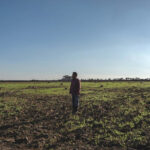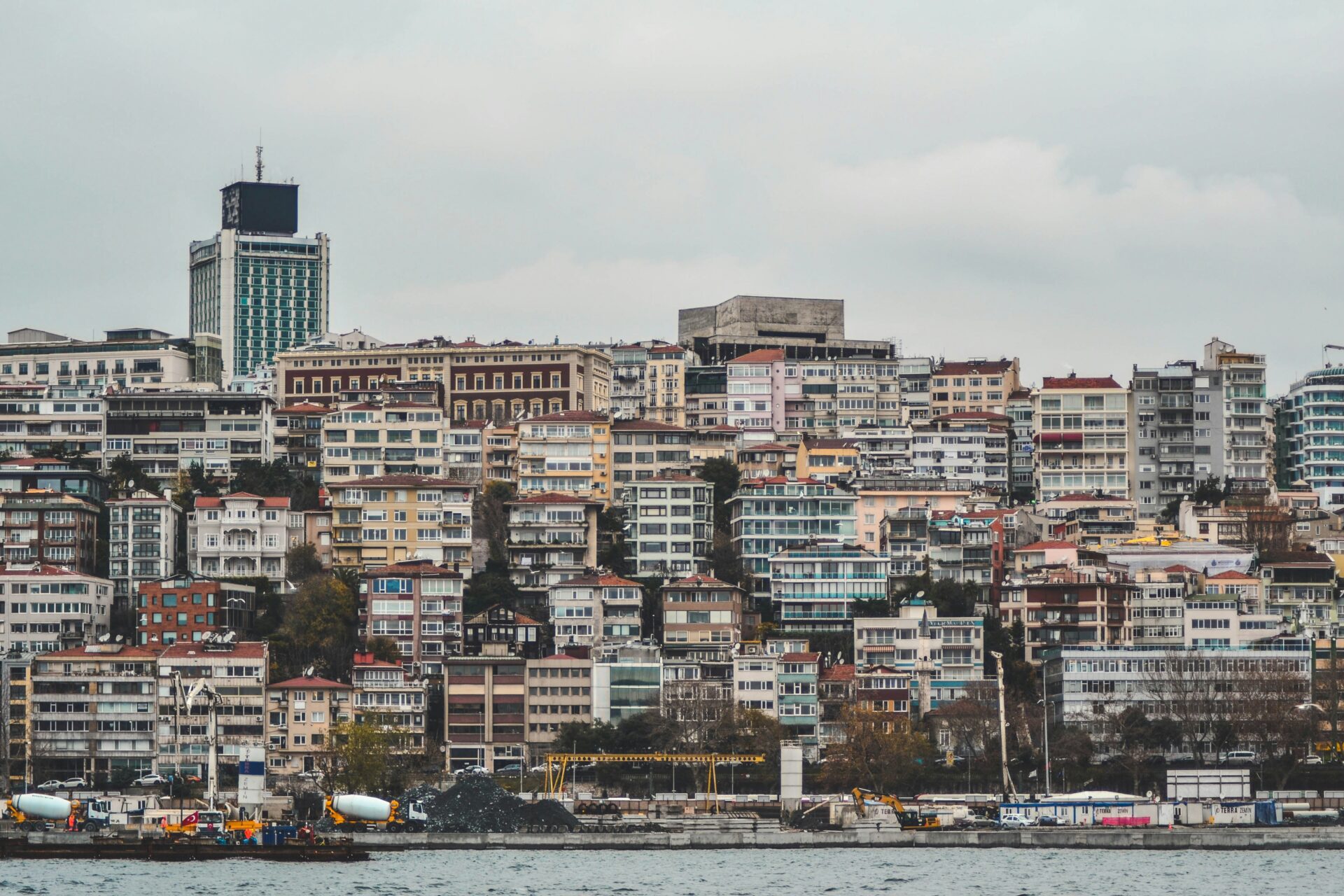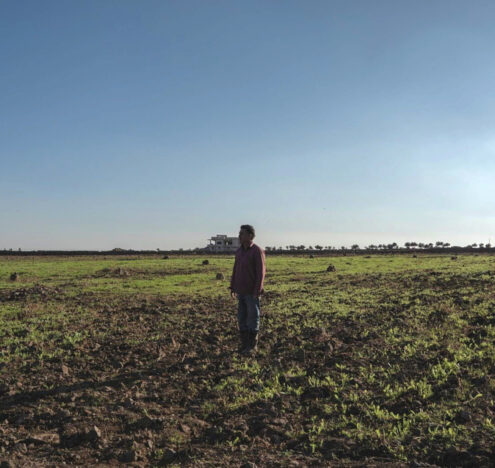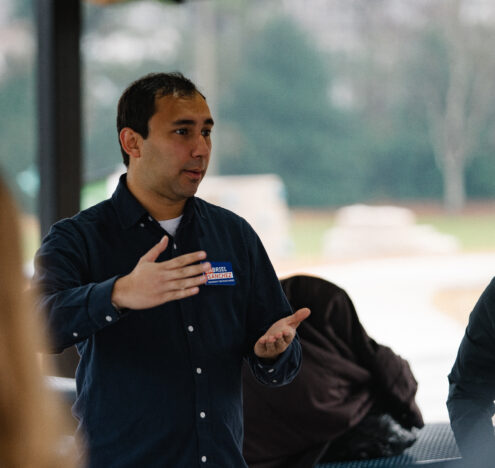During Istanbul’s dog days of summer, a group of middle-aged women met under a majestic pistachio tree in Validebağ Grove. They slowly walked through a stand of Cyprus, oak, and gum trees, pointing out blackberry bushes and picking off sour green plums to snack and share with one another. Woodpeckers drummed against the bark of a purple flowering redbud, the symbol of the Bosporus, as the group ambled along the gentle slopes, across a small stream that passes through the valley.
“It is unbelievable that something like this still exists in the middle of the city,” said Figen Küçüksezer, an optometrist. “We are dependent on this nature. It doesn’t belong to us.”
Küçüksezer is part of Validebağ Defense, one of the activist groups who have been fighting to protect the grove amid government efforts to develop the land. However, after the change in mayors in the March municipal elections, the guardians of Validebağ may finally be able to take a breath.
Before Istanbul became the concrete jungle it’s known as today, it had a sprawling network of forests. The city of seven hills also contained hunting grounds for Byzantine emperors and Ottoman Sultans. “Whoever cuts a branch from my forest, I will cut his head,” Sultan Mehmed II, who led the Ottomans to take Istanbul, ordered in the 1400s.
The heavily wooded Bosporus Region began to change as the city’s residents moved beyond the city walls, starting in the 18th century. There were more than 40 groves in Istanbul in the 1960s, but over time they became privatized or turned into parks, losing their original form. While remnants of these forests still provide pockets of relief for the city’s at least 16 million residents, unplanned, rapid construction has led to a decrease in trees and groundwater.
Shrinking Number of Green Spaces
Validebağ Grove is one of the last remaining plots of wild space and possibly its most contested. It is the second largest green space on the city’s Asian side, full of 400-year-old trees, storks, and squirrels. The land was originally gifted to the mother of Sultan Abudulmecid, who brought various plant species to turn her home into a sprawling botanical garden. Valide Sultan collected hundreds of varieties of fruit trees — from quince to figs — and planted them in the grove.
After the start of the Turkish Republic in 1923, the area was used for teacher housing and then to treat tuberculosis, as the green space offered the necessary ventilation and sunshine needed for open-air treatment, and healthy food was sourced from the orchard, before such medical treatments stopped in the 1980s. The grove was left abandoned after a 1980 military coup.
We are dependent on this nature. It doesn’t belong to us.
– Figen Küçüksezer
But in 1999, a local neighborhood mukhtar and other residents lobbied to successfully have the grove declared as a first-degree natural protection area to try to put a stop to the encroaching development projects. This was only the start of a quarter century of struggle by the stewards of the woodland.
Arif Belgin, one of the founders of the Validebağ Volunteers Association, recalls his initial efforts to protect the grove: “We met there every day, and we eventually collected over 6,000 signatures.”
The grove had more than 6,000 trees, 12 of which were deemed monumental trees, or natural heritage, and north of 120 types of birds.
Eyes on Development
During the walk through the grove, Aysel Okan Hoşgit, who sported a bob of gray hair and a t-shirt that said Summer Dream with various tropical birds, described how she got involved in preserving the area. She had come from a leafy village along Turkey’s Black Sea coast and was astonished to discover Validebağ upon moving to the big city: “It was like an oasis for us.”
For nearly 20 years, the Üsküdar municipal government, under the Justice and Development Party (AKP) and its gaggle of developers, tried to take over the land. They wanted to add roads and restaurants, and swap out the native flora with metal and concrete.
President Recep Tayyip Erdoğan, whose personal residence is nearby, called for the construction of a mosque in 2014 on the northwest border of the land, which many residents and environmentalists saw as a trojan horse for further commercial development.
Turkey has experienced increasing polarization, which has manifested along political and cultural lines, as well as climatic. Upon coming to power, President Erdoğan ushered a major construction boom that has transformed the urban landscape of the city and the country.
Entire neighborhoods were emptied and demolished and replaced with apartment complexes and malls. According to a 2019 study by the World Cities Cultural Forum, Istanbul ranked last among 37 major cities in terms of active green space. Despite the further bulldozing of these areas, the government has still applied for Istanbul to be considered as the European Green Capital year after year. This has led to divisions about what kind of city Istanbul should be.
Pushback
The 2013 Gezi protests — which shook the nation — were sparked by the proposed development to turn a central green space into a shopping mall. The garden of Istanbul’s Piyale Pasha Mosque, which grew produce for local consumption since the 16th century, was destroyed as part of the development of Kasımpaşa neighborhood. Additional megaprojects, including the construction of a third Bosporus bridge and a new airport, have led to additional forest loss.
Erdoğan has most recently advocated for development of the Istanbul Canal project, a series of artificial waterways and islands for shipping, that would bypass the Bosporus Strait. The ambitious project could have grave ecological costs and jeopardize the city’s water supply.
While the Gezi protests eventually died down, less-publicized struggles — including the fight over Validebağ — have continued. Residents have tirelessly filed lawsuits and put themselves in the way of Caterpillars trying to uproot trees, all to restrict efforts to develop roads or change the natural swath into manicured lawns.
One internal policy document of the Validebağ Volunteers Association states: “As long as the profit-making projects on Validebağ Grove continue, our resistance will continue as well.”
Nilüfer Ağirdir, a board member of Validebağ Volunteers Association, recalls the reaction from police as she and other middle-aged activists broke through a barricade set up to expand a road. “They were astonished. I was 50, and they could have been our sons, so they didn’t know what to do,” Ağirdir said with an impish grin. The police tried to later take a few to jail, but the crowd of comparably older demonstrators wouldn’t let them.
National Attention
The doubling of a car park on the border set off another concerted demonstration by activists in the heels of Gezi. Then came the protests against the proposed mosque a year later, which is when Küçüksezer got involved. Residents did not feel it was necessary given the existing sufficient number of mosques in the area. Still, trees were removed and the mosque was eventually built under the protection of heavily armored police, Küçüksezer recalls. The demonstration gained national attention and brought in hundreds from throughout Istanbul and the country.
Advocates collected 80,000 signatures of those opposed to the project. They tried to block construction equipment. Hilmi Türkmen, then the AKP mayor of Üsküdar, derided them at the time as “fake environmentalists.”
Validebağ again was suggested to be the site of one of the country’s “nation’s gardens” in 2018. The government initiative would have led to the pouring of concrete and adding of lighting, which would increase light pollution and deter birds. The government eventually halted the construction of these projects, given austerity measures and accusations of questionable government tendering.
“The nation’s garden project was absurd as Validebağ is already the nation’s garden. There is no need for additional facilities to be built,” Belgin said.
Minister of Environment and Urbanization Murat Kurum and then mayor Türkmen, tried once again, with Kurum saying: “We will turn Validebağ into Hyde Park.” But the Validebağ Volunteers Association took the case to court.
“A Source of Life”
In the March 31 municipal elections, Türkmen lost to Sinem Dedetaş, who made history as the first woman to ever win in Üsküdar, flipping a traditionally conservative district in the city. A member of the opposition People’s Republican Party (CHP), Dedetas campaigned on protecting the grove. The day after she won, the adjoining Kadıköy Municipality playfully tweeted: “Good morning Üsküdar. Are we meeting in Validebağ ?”
A few weeks after assuming office, Mayor Dedetaş visited the grove and promised to preserve the park, later tweeting that the grove is “not only a green area, but also a source of life that allows Üsküdar to breathe.”
The Üsküdar municipality began to regularly collect trash shortly after. Discussions are underway to place a third of the area under absolute protection, only to be used for scientific research.
The Council of State then made a final decision regarding the lawsuit in May, canceling the tender on the grounds that the protected area would be opened up to construction. Onur Cingil, the lawyer of the case, said: “Those who have been working for a quarter of a century won, not those who poured ‘rubble’ into the grove.”
“This decision will become the basis for future court cases as well,” Cingil told Inkstick, “Important for nature and for all people.”
Despite the recent court decision, the activists continue to tirelessly protect Validebağ from over usage. Over a public holiday in June, metal fencing was put up along the entrance to the grove for unknown reasons.
A group of Validebağ Volunteers Association members, sporting yellow vests and pins with storks on them, were once again collecting signatures to have the railing removed. “Hey,” Ağirdir approached passersby. “Would you like to sign our petition?”




















